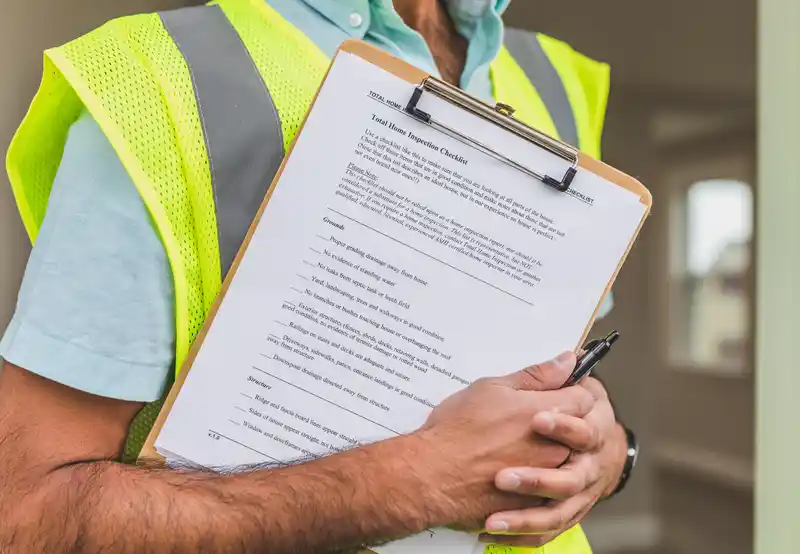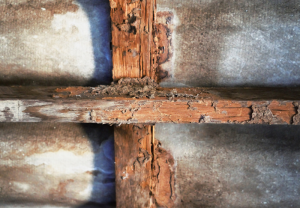Buying a home is one of the biggest financial commitments you will ever make. Whether you are a first-time buyer or a seasoned investor, ensuring the property is in optimal condition before signing the contract is crucial. A comprehensive pre-purchase house inspection can uncover hidden structural issues, safety hazards, and costly repairs that may not be immediately visible, helping you avoid potential financial pitfalls.
From the foundation to the roof, every aspect of a home should be examined to ensure it meets safety standards and does not pose long-term maintenance risks. Understanding the key areas to inspect before finalising your purchase can save you thousands of dollars in unforeseen repairs and prevent future headaches. This detailed checklist covers the essential components of a home inspection, equipping you with the knowledge to make an informed and confident decision when buying a property.
1. Exterior Inspection: The First Line of Defence
Structural Integrity
The foundation and exterior walls of a home provide the first signs of potential structural problems. Cracks in the foundation, uneven walls, and visible shifting could indicate serious issues that require immediate attention.
Roof Condition
A well-maintained roof is essential for protecting your home from weather damage. Signs of damage include missing or curling shingles, sagging sections, and water stains on ceilings inside the home. A professional pre-purchase house inspection can identify whether a roof replacement is necessary.
Drainage and Gutters
Proper drainage prevents water from pooling around the foundation. Check if gutters are securely attached, free of debris, and draining water away from the house to prevent erosion and leaks.
Windows and Doors
Inspect all windows and doors for gaps, rot, and functionality. Poorly sealed windows can lead to high energy bills and water intrusion.
2. Interior Inspection: Identifying Hidden Issues
Walls, Floors, and Ceilings
Look for signs of water damage, mould, or cracks, which could indicate foundation problems or plumbing leaks. Discolouration or bubbling paint can also suggest moisture issues. Uneven floors might indicate structural concerns, such as shifting foundations or rotting subflooring.
Electrical Systems
Faulty wiring is a major fire hazard. Ensure the electrical panel is up to code, with circuit breakers properly labeled and no signs of scorching. Test all outlets for proper grounding and function. Flickering lights, warm outlets, or frequent breaker trips could indicate outdated or faulty wiring that needs professional assessment.
Plumbing Systems
Check for leaks under sinks, test water pressure, and look for signs of corrosion in visible pipes. A pre-purchase house inspection ensures you avoid costly plumbing repairs post-purchase. Examine water stains on walls or ceilings, as they may indicate past or ongoing leaks. Run faucets in multiple areas to check for pressure inconsistencies, and flush toilets to ensure proper drainage.
Heating and Cooling Systems
Heating and cooling systems should be in good working order. Ask about the age of the units and inspect for unusual noises, poor airflow, or inefficient heating and cooling. Dirty air filters, rusted components, or water pooling near the unit could indicate underlying issues. Additionally, verify that the thermostat responds correctly and that vents distribute air evenly throughout the home.
3. Pest and Termite Inspection: A Silent Threat
Signs of Infestation
Pest problems can lead to severe structural damage. Look for droppings, chewed wood, mud tunnels, and damaged insulation, as these are common indicators of termite and rodent infestations. Wood that sounds hollow when tapped can be a sign of internal termite damage. Additionally, small piles of sawdust-like material around wooden structures may indicate an active infestation.
Preventative Measures
A professional pre-purchase house inspection can include a pest inspection to ensure your home is free from termites and other destructive pests. Regular pest control treatments, sealing entry points, and maintaining proper ventilation in crawl spaces can help prevent infestations. If an inspection reveals pest activity, consult with an extermination specialist to assess the severity of the issue and discuss possible treatment plans before proceeding with the purchase.
4. Kitchen and Bathroom Inspection: High-Risk Areas
Plumbing and Water Damage
Leaky faucets, slow drains, and water stains could indicate plumbing problems. Bathrooms should have adequate ventilation to prevent mould growth. Check under sinks for water damage, inspect grout and caulking for deterioration, and ensure there are no foul odours coming from drains, which could signal plumbing blockages or sewer line issues.
Appliances and Fixtures
If appliances are included in the sale, ensure they function properly. Check for outdated electrical wiring and water supply connections. Dishwashers, ovens, and refrigerators should be tested for efficiency, while bathroom fixtures like toilets and showers should have consistent water pressure and no leaks. Additionally, inspect exhaust fans in kitchens and bathrooms to confirm they are venting properly and reducing moisture buildup.
5. Safety and Compliance: Meeting Australian Standards
Smoke Alarms and Carbon Monoxide Detectors
Ensure smoke alarms are installed in required locations and are operational. Carbon monoxide detectors should be checked for proper function.
Building Codes and Compliance
Verify that renovations or extensions comply with local building codes. A licensed inspector can provide insights into whether a home meets Australian safety regulations.
Secure Your Investment with a Professional Inspection
Skipping a thorough pre-purchase house inspection can lead to unexpected repairs, costly renovations, and even potential legal issues. A home that appears perfect on the surface may have hidden structural problems, outdated wiring, plumbing leaks, or pest infestations that can significantly impact your investment.
By investing in a professional inspection, you gain the peace of mind needed to make a confident decision. Trained inspectors assess every aspect of the property, ensuring that it meets safety standards and is free from major defects. With a comprehensive inspection report in hand, you can negotiate better terms, request repairs, or reconsider your purchase if necessary.
Before signing any contract, take control of your future by ensuring your prospective home is structurally sound and free from costly surprises. Book a thorough pre-purchase inspection today to safeguard your investment and move forward with confidence.




